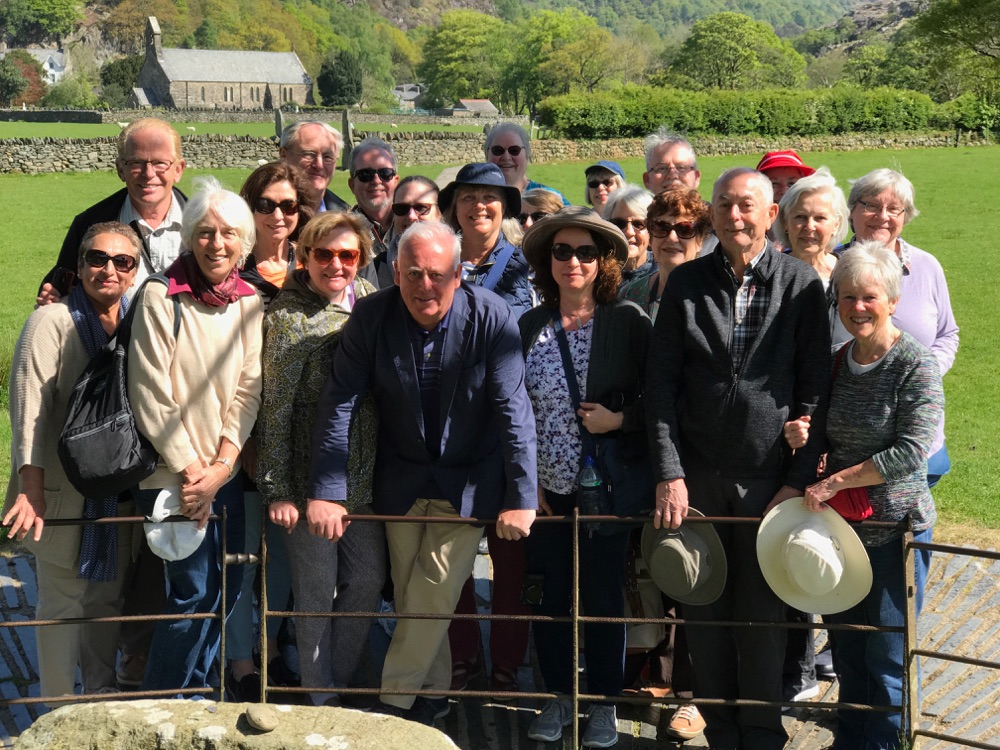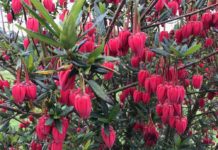After visiting Bodnant Garden, we travelled to the seaside town of Llandudno and checked in to one of the stately, old-world Victorian-style hotel on the promenade. I had been here with my father when I was 10 and I had very fond memories our time together there.

I was worried a little that this popular seaside town that was at its peak in the 1950s and 60s would be showing serious signs of wear and tear.

So it was a great relief to find the defining row of hotels on the sea front with their charming Victorian architectural features had all been refreshed and upgraded and still looked beautiful with newly painted and cared-for facades.

It was fun walking the promenade and finding a Mad Hatter statue. The soft light in the evening turned the evening sky into a gloriously rich deep blue.
Some said the town looked more like a village on the Italian riviera than a quiet bay town in North Wales.
From Llandudno, we moved into Snowdonia to visit the quaint little village of Beddgelert.

We walked through pleasant woodlands and quiet green fields and alongside a sparkling stream, lined with trees that cast a lovely dappled shade, to reach the grave of Gelert, a famous self-sacrificing hound.
The heroic dog was slain by his master, Prince Llewellen, back in the 13th century when the prince made a terrible mistaken and killed Gelert, thinking the dog had savaged his children.

In reality, Gelert had saved the children from a wolf. It was the wolf’s blood – not that of the children – that the prince saw in the nursery.

Our walk to Gelert’s gave was an opportunity to reflect on the virtues of self-sacrifice and protecting little ones from dark forces and . . . making quick and rash judgments.
It was also an opportunity to learn about sidestepping sheep poop which, unfortunately, was one of the hazards on the route.

From Gelert, we travelled on to Harlech to walk the walls of the famous and beautiful 13th century castle fortress overlooking the Irish Sea.

During the War of the Roses, the castle was occupied by Lancastrians before it was taken by Yorkist troops.
The seige during the conflict has been immortalized in the rousing song, Men of Harlech. Today the castle is a world heritage site. We walked the high walls from where we enjoyed panoramic views of the countryside.

From Harlech, we went to see a beautiful private garden, Gerddi Plas Brondanw at a property dating back to 1550.
We found superb clipped yews and elegantly framed views and an intelligent decision to make the best use of the “borrowed landscape” by incorporating as much as possible the magnificent surrounding Welsh hills and countryside.

In the garden, we found unusual items, such as a Chilean lantern tree (Crinodendron hookerianum) and the hugely scented rhododendron, Fragrantissimum, in full bloom.

We chatted with the head gardener for quite a time. He told us that because the garden is only a few feet above sea level and the Gulf Stream is not far away, the garden benefits from a protecting, mild climate, although heavy rain often does some damage from root rot.

The head gardener also agreed with us that the turquoise blue used to paint railings, gates and balustrades throughout the garden was indeed hideous and hard to figure how it is in any way complementary to the rest of the garden.

From here, we checked in to The Village Portmeirion, a quirky tourist complex in Gwynedd, where they filmed the popular TV show, The Prisoner, in the 1960s.

Built by Sir Clough Williams-Ellis between 1925 and 1975 in the style of an Italian village, the Village turned out to be so intriguing and engaging, my group didn’t want to leave – they just wanted to stay and walk around what is a surreal fantasy village.

It is, however, situated in a truly impressive and beautiful location with lovely views over the River Dwyryd estuary and surrounded by Welsh hills.

The next morning, we took a short ride to check out the little town of Criccieth with its castle on the hill and then on Pwllheli and Abersoch and other villages and towns along the Llyn peninsula.
























